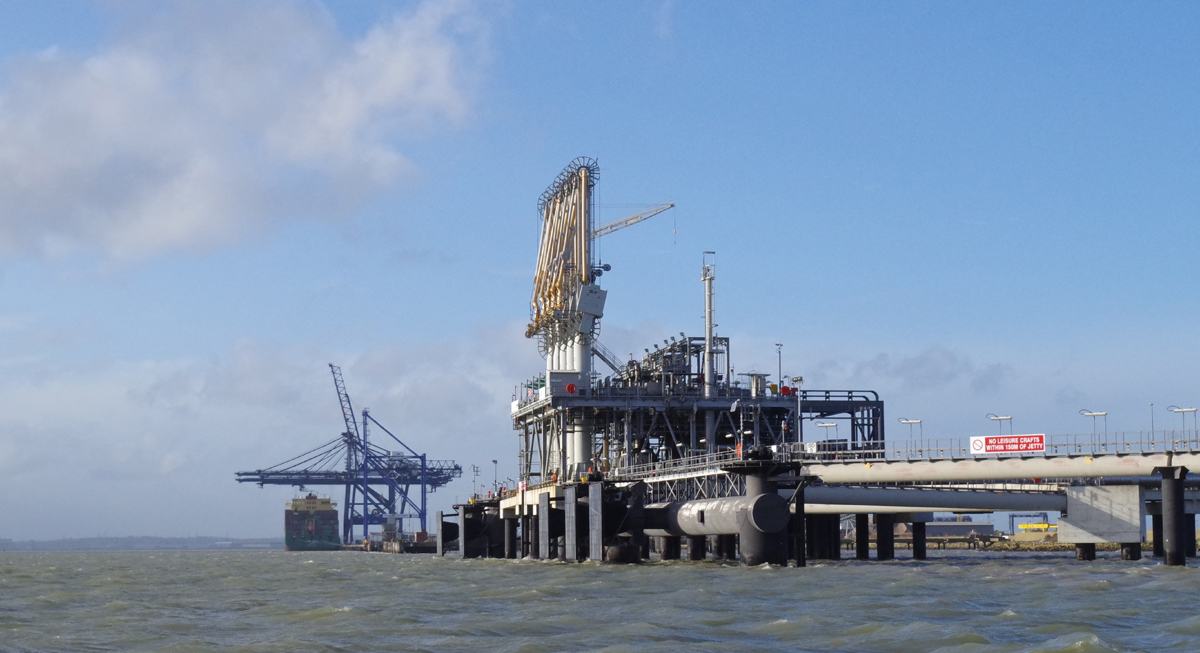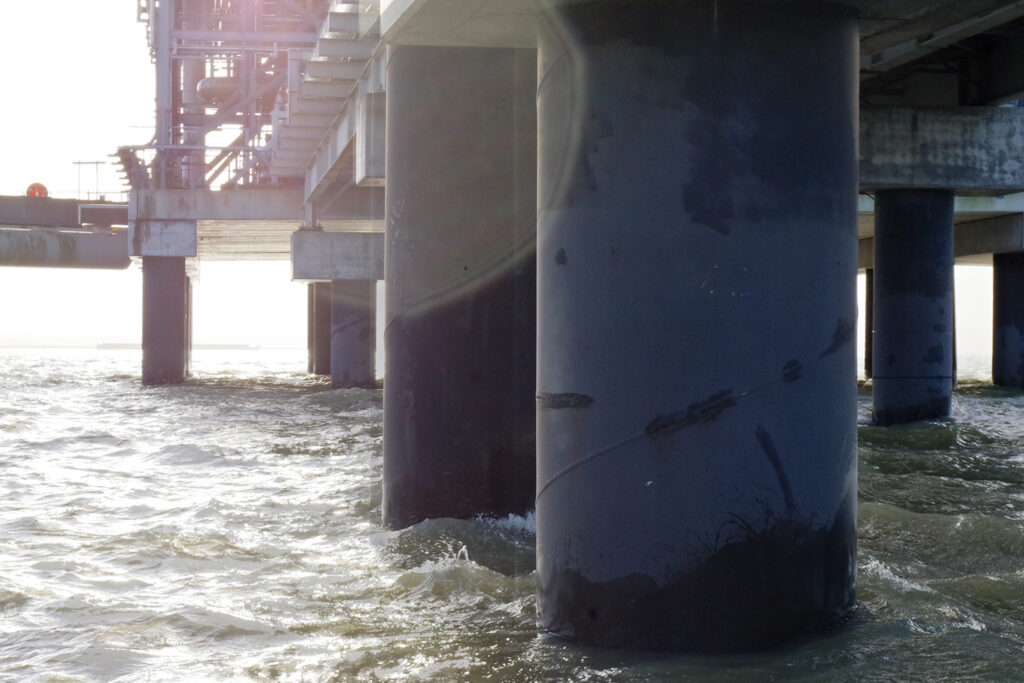
From initial conception to maximising the life span of the facility, Beckett Rankine has a long history of asset management at the National Grid’s Grain LNG terminal.
Beckett Rankine were employed in 1998 to develop a masterplan for a new terminal in the Isle of Grain that later evolved to become Europe’s largest liquified natural gas (LNG) terminal.
The site stands on the foundations of a former oil refinery that closed in 1982. The site had the potential for development as a deep-water port, benefitting from easy navigation routes and proximity to existing infrastructure.
From a selection of options, we developed a masterplan that incorporated a container terminal, car handling terminal and a bulk aggregate facility. We provided an outline design and assisted the client and development partners in obtaining the development consents.
In the early 2000s, a new LNG terminal was needed in the London area to take advantage of this emerging energy market. The Isle of Grain was identified as an ideal site for development, and so Beckett Rankine considered two options for the Front End Engineering Design (FEED), recommending the construction of an approach trestle, jetty head (island berth) and mooring & berthing dolphins.
We designed two berths to accommodate QMax and QFlex LNG vessels, and carried out dredging design along with surveys and assessments on the existing jetties.
As the Isle of Grain is an estuary port location surrounded by environmentally sensitive land, we worked closely with environmental specialists and statuary authorities to ensure adequate mitigation, such that the effect on wading bird and fish breeding populations was minimised.
Since then, Grain LNG has evolved into the powerhouse it is today, now capable of storing one million cubic metres of LNG and handling up to 15 million tonnes per annum.
LNG was a relatively novel market in the UK during the early 2000s, with uncertainty around how the industry would progress. Because of this, the Grain LNG development had been designed for a 25-year life span.
Beckett Rankine has continued to work alongside GLNG and has carried out various maintenance and asset management projects at the facility in the years that followed. This included designing options to allow greater flexibility in the vessels using the berth, including allowing newer, smaller LNG carriers to berth on the same jetties without compromising the large carrier berthing.
With the 25-year design life approaching, in 2020 we were commissioned to undertake a major survey and investigation into whether it was possible to extend the life of each of the jetties for an additional 25 years.
Beckett Rankine undertook a weeklong survey, involving dive surveys as well as land, vessel and walkover surveys of the berths. This information was used to provide recommendations for targeted intrusive surveys and testing, which culminated in the production of large structural and geotechnical models of entire marine facilities on both jetties.
Using these models, we were able to ascertain the utilisation of the berths in the as-built condition, current condition, and the potential condition of the jetties in 2050 if left untouched.
We presented sustainable and cost-effective repair strategies for the client that balanced continued operation and the safety of the site with sustainable material usage and cost.
In 2022, we expanded upon the life extension plans to develop a Cathodic Protection system on Jetty 10 to limit the levels of corrosion on the steel piles in the water column, as well as limit the effect of Microbially Induced Corrosion (MIC) such as Accelerated Low Water Corrosion (ALWC).
The facility is extraordinarily large. With around 112 piles requiring cathodic protection, it wouldn’t be feasible to shut down operations for a prolonged period to carry out the work in such a large and busy facility. Additionally, underwater welding needs to be limited due to the risk of underwater welding flaws, as well as the berth being an LNG facility.
To accommodate these challenges, our design solution was a clamping system for the anodes that worked on all piles ranging from 610mm diameter up to the 3500mm diameter berthing piles.
The multi-phase plan accounted for how best to safely carry out the work, minimising the amount of time divers spend underwater during installation, as well as reducing disruption for the facility.
